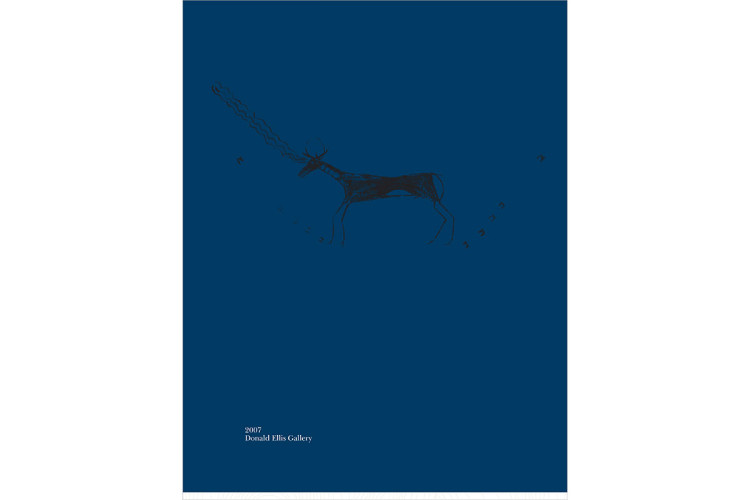
2007
$35.00 USD
18th century
basalt
width: 6 ¼"
Inventory # N3448
Sold
Donald Ellis Gallery catalogue, 2007, pgs. 42-43
For a very similar example collectd in 1879 by Israel W. Powell from the Haida and now in the Canadian Museum of Civilization - See: Macdonald, George, F. Haida Art. Vancouver: Douglas & McIntyre, 1996, pl. 78
Stone hammers, mauls and pile drivers are some of the most intriguing objects from the Northwest Coast. Some are simple and purely functional, while others combine basic utility with a superb sense of form and design to produce a very refined sculpture. A third type, as in the example seen here, combines functional form with representational embellishments that create a kind of living percussive instrument. These hammers were made to perform their tasks while giving homage to the images of mythology and family history that make up their outward appearance. In effect, the beings that make up the emblems and images of myth and lineage history are doing the work that sustains the people; driving stakes for fish weirs, splitting wood for planks, canoe making and even making firewood.
Archaeologists relate that these highly developed stone sculptures can date back as far as 2500 years. They most likely stopped being made around the time of major population decline after the mid 19th century, a result of introduced diseases. Also by this time, iron and steel replacements were widely available, and the old values that motivated the creation of more culturally significant tool forms were waning in the face of new standards and practices brought by outsiders.
This elaborate example exhibits stylistic traits that relate it to woodcarvings from the late 18th century period or earlier. The image appears to represent a mammal devouring a human figure. The main mammal image may be a wolf or bear whose ears would have been too fragile to include in a tool such as this. It could also represent an orca whale which were often portrayed with wolf-like characteristics. The placement of these features and the lack of even a subtle indication of ears seem more likely to indicate the whale attribution, but it’s difficult to read such imagery with complete accuracy while lacking any specific cultural information from its original owners.
The diminutive size of the human figure emphasizes the massive form of the hammerhead, and one can readily imagine the rhythmic trump of impact as this beautifully shaped tool was employed in its duty. The narrow piercing behind the human figure once contained the root or rawhide lashing that fastened the hammerhead to the wooden handles it has had over its lifetime. The graceful lines of the human’s limbs, their echo in the form of the nostril, the fluid shape of the eyelid lines, and the bulging eyes all communicate the skill of the hammer’s maker, and make for great visual satisfaction in an otherwise purely utilitarian object.

$35.00 USD